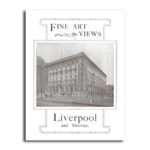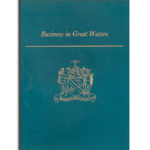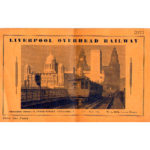Description
The story of a group of dockyards on both banks of the Mersey and at Holyhead, which operated for two centuries under a variety of partnerships and limited companies, always including the name “Grayson” and with a member of that family concerned in the management.
May, 1935. Apprentice marine engineer (steam and diesel) 21 year-old Lester Rankin (in the future to become my father) has just nipped out of the Sandhills works of Grayson, Rollo and Clover, Ltd. in his lunch break, to a GPO phone box to call his girlfriend (eventually to become his fiancee, then wife and my mother) who worked at the Walton offices of the Dunlop Rubber Co. He wants to see if she can book a tennis court for a game that evening. They have just said “Hello” when there is a strange noise, and they have a crossed line with the internal telephone system of Grayson’s. The works manager is speaking.
“What are we going to do about Rankin. He completes his indentures next week?”
“ I am afraid you will have to sack him.” Said Col. Rollo, one of the directors. “With the state of business as it is, we cannot afford to pay him a journeyman’s wage.”
Lester shouts into the receiver in a rage, but the crossed line only works one way – and he has lost his connection to Dunlop and has no change left. Baffled, he stares out of the phone box, and notices a poster, on the other side of the road.
“OVER SIX FEET TALL?” JOIN THE CITY OF LIVERPOOL POLICE!
Always impulsive, particularly when angry, and an impressive 6’-2”, he went round to the nearest police station and applied. He never went back to Grayson’s, sending a letter, telling them what to do with his indentures. He never did find out how the crossed line happened.
This particular incarnation of the business Grayson, Rollo and Clover only dated from a series of amalgamations which culminated in 1928. Its earliest incarnation was in 1747,when Edward Grayson, shipwright, a native of Whitehaven, was admitted as a Freeman of the City of Liverpool, and by 1752 was well established, not only as a shipwright, but with other business interests as well.
It is usual for commissioned company histories like this to gloss over unpleasant aspects of a firms history, and gently massage the egos of the present day board (although quite what purpose a page in the present work bearing the facsimile signatures of the 1955 board of directors is anybody’s guess) but here there is no attempt to gloss over the Grayson family’s activities as slave-traders and privateers. The early Graysons were colourful personalities. One, remonstrating with his employees about their striking work, was hit on the chest by a stonethrown by someone who dissented from his opinions. Grayson charged into the crowd, grabbed the offender and knocked him to the ground. Unfortunately, the man hit his head fatally fracturing his skull. Mr. Grayson was charged with manslaughter, and while awaiting trial, got into an argument with a young officer whom he challenged to a duel. Grayson was killed at the ensuing encounter. Some said that he had “de-loped” – deliberately firing his gun into the air, giving his opponent a free shot.
Over the years, while vessels were built, usually small specialised craft like ferries or lifeboats, the firm in its various incarnations began to concentrate on the dry dock repair or rebuilding of ships often from the keel up. This expertise stood the firm in good stead during two world wars, when the dealt with a never ending stream of badly damaged vessels, often barely afloat and returned them to service in record breaking time.
I have often noticed in curating this site that when a firm decides to commemorate its achievements by commissioning a book, it is not long before the writing is on the wall! Post war, the business shared in the decline if the British shipbuilding industry. The smaller yards on the Liverpool shore were early casualties. By the 1970s, the Birkenhead site had become known as Western Ship Repairers Limited before closing altogether in the early 1980s, with the workshops subsequently demolished and the dry docks filled in. Only the indentations on the river wall remain to show their original location.
PREVIEW BELOW – MAY TAKE A WHILE TO LOAD.






Reviews
There are no reviews yet.